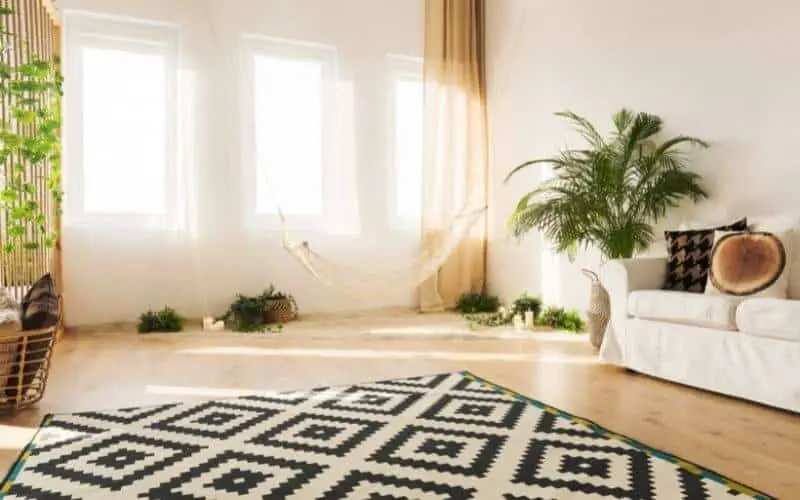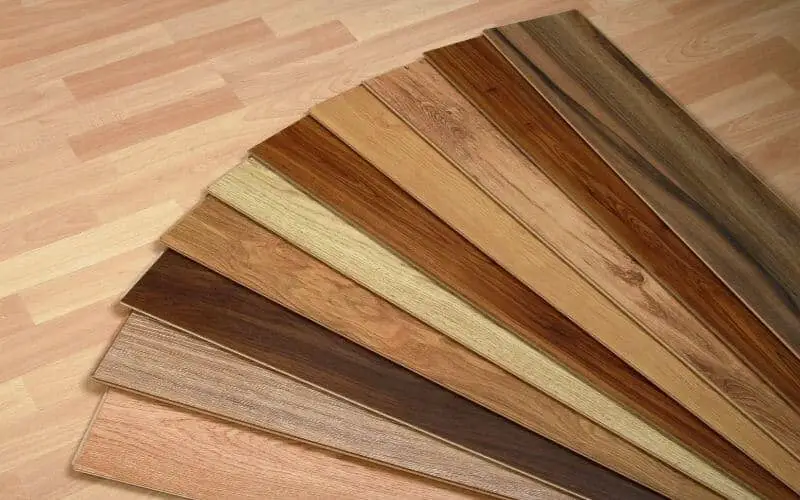Mostly when describing the type of floor to be used, it is angled towards leveled floors—forgetting that uneven floors happen constantly.
The best bet for this would have been to pull off the whole flooring and level the surface. But in some cases, our financial budget might not shoulder this great task.
This post would show the best flooring for uneven floor surfaces. These floors include engineered wood, luxury vinyl, sheet vinyl, laminate floor, linoleum, and solid hardwood.
Read on as we explain more on this.
Related: How to level furniture on uneven floors
Best Flooring for Uneven Floor Surface
Table of Contents
Some flooring can pit against the bumpy and warping effects of an uneven floor surface. The best flooring for uneven floor surfaces is discussed below.
1. Engineered Wood
In all types of floating flooring, engineered wood is one of the best options for uneven surfaces. It is made of real hardwood on the surface and synthetic components on the base.
Engineered wood has that comfort when you step on it. It is termed a floating floor because you can directly install the engineered wood without a subfloor.
But you would have to adhere to the periphery of the joist to stick to each joist. Doing this makes the engineered floor even stronger.
Read: Floating engineered wood floor problems
2. Luxury Vinyl
Luxury vinyl materializes in plank and tiles. It is the recent production of vinyl flooring. It is a floating floor with a click and lock method at the edge of each plank and tile, put in the uneven floor in the home.
It is made of synthetic material, more of the reason it is very sturdy. It is waterproof, scratch-resistant, and has many aesthetic designs and forms.
3. Sheet Vinyl
Sheet vinyl comes in various qualities. Some are nice and thick, while some are very thin. It is okay to have a thin sheet of vinyl for places like the bathroom.
If you plan on installing sheet vinyl, it is advisable to choose the one with the best quality. It has the best makeup and is also flexible. Without a subfloor, it might not cover the whole bumpy area, but it can cover specific parts.
4. Laminate Floor
It comprises layered wood composites and synthetic components in the joist. It is said to be the oldest floating flooring to be made.
It has this click-and-lock at the edge of the plank, which you can install on an uneven surface. So, you don’t have to glue it to the uneven floor.
Not to forget, not all laminates are waterproof. They might be water-resistant but not waterproof. Hence the need to be careful to prevent warping. Once you get a water spill, wipe it off immediately.
5. Linoleum
This floor works almost the same way as the other floors, such as laminate and sheet vinyl. The difference is that it is harder to cut.
Linoleum sheets and tiles work perfectly well on uneven floors. Since it is a floating flooring, it makes it easy to cover the bumpy surface.
Linoleum is not waterproof, hence the need to protect the surface after installation. It needs to be done regularly to protect it from water and scratches.
Read: How to clean linoleum flooring
6. Carpet
For places where the possibility of a liquid spill is at its barest minimum, you are going to need a carpet.
The soft makeup of the carpet can cover the bumpy and warped effect from the uneven floor. It is also easy to install, as you only need to glue it to the surface.
7. Solid Hardwood
This is the least recommended for camouflaging uneven floor surfaces. But, if you prefer hardwood, it is also workable.
Hardwood is not a floating floor, hence the need to level the floor before installation. Either you level the surface yourself or call on professionals to help in the leveling process. Either way, it would end up making the installation easy and smooth.
Read: How to fix hollow spots on hardwood floor
Conclusion
In a perfect world, it would have been advisable to pull off the whole flooring and level the uneven surface. But not all financial budget supports this move. Hence, the need to improvise, and we clearly stated the best flooring for the uneven floor surface.

